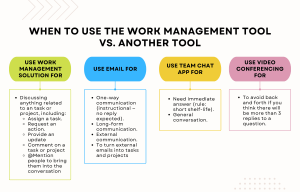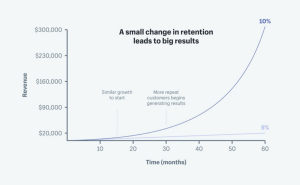One of the best gifts of being an entrepreneur isn’t just expanding your business, but expanding your business organically with loyal brand ambassadors who are willing to inform everyone about your amazing products and services, drumming up more business by word-of-mouth.
A great way to generate leads is through a sturdy referral program. Referral programs are to be initiated among a community where trust is key; there needs to be some extent of confidence in customers’ motivation to tell their friends and family members about your business.
Now more than ever, it’s imperative for companies to put their best foot forward to set an example for how they’re overcoming the challenges presented by COVID-19 in an effort to sustain a good rapport with their customers. Doing so will generate positive feedback from customers who feel safe, and post them on review sites and social media, recommending your business to their friends.
Let’s explore the easiest ways to accumulate more customers for your business via referral programs:
Know when to ask
First and foremost, you have to be aware of when it’s appropriate to ask for referrals and how to ask for them. You don’t want to approach a customer for referrals if they’ve only visited your website, but haven’t purchased anything from you yet. Or someone who’s only made one transaction with little engagement, not knowing their feelings on the service or product just yet.
A better way is to start by retargeting existing customers. Sending a friendly heads up to retargeted customers will bring the referral program to their attention, creating a higher probability that they will be motivated to participate.
With the right Client Relationship Management (CRM) software tool, you can automate when you want customer retargeting to take place with the email marketing campaign feature.
For example, you can program an email to be sent if your metrics detect they’ve visited your referral program landing page, reminding them of the benefits they will receive after they refer a friend to your business. No matter what the situation may be, it’s always worth reaching out directly to customers who are already familiar with your brand.
The optimal time to ask customers for a referral is when you know they’re happy and most engaged with your brand. It’s always best to follow up after a repeat purchase, delivery or a successful customer support call.
You can send a follow-up email with a message to the effect of: “Thank you for being a great customer! We’ve truly enjoyed serving you, and would be happy to help anyone else you think would benefit from our products as well.”
In addition to thanking them, sweeten the deal by offering them the opportunity to earn rewards. Create a refer-a-friend program that not only nurtures customer relationships, but makes them feel appreciated and recognized, strengthening their bond with your brand by being more engaging.
Another subtle way to approach asking for referrals is to pick a special occasion such as a customer appreciation day or a certain holiday and create a campaign that benefits both customers and referred friends. Put a sense of urgency on it as well such as: “Happy Customer Appreciation Day! Refer a friend within the next 24 hours and you both will receive a free month’s subscription!” Or you can say, “Refer as many friends as you can during the month of December and you’ll be entered to win our Holiday Giveaway Sweepstakes! The more friends you refer, the better chance you will win!”
Make referrals easily accessible
If your business is a well-oiled machine and you’re confident that you’ve provided exemplary customer service, boldly ask your customers for feedback. It’s important that anyone who comes into contact with your brand knows there’s a referral opportunity.
Integrating your referral program into your buyers’ journey will increase the chances of transitioning them into brand ambassadors. You can do this in the following ways:
- Include a link to your customer reviews and referrals page on your purchase checkout
- Create a separate landing page that shows up in customers’ confirmation email after purchase
- Place a referral call-to-action (CTA) on your site’s home page above the fold so it’s easy to access, it could even be in the navigation bar
- Create referral program awareness on your social media channels, within your blog posts and email campaigns
- Request referrals on your product shipments by printing a link right on the packaging
- Implement a link to your referral program page on website menus or ad space, monthly newsletters, thank you confirmation pages, invoices, flyers or other printed material
Ensure that the referral experience goes as smoothly as possible, creating the least amount of necessary steps the customer has to take to offer word-of-mouth.
Avoid aiming your customers to a CTA that’s difficult to locate, having them access a convoluted referral code, or making them create an account on your site in exchange for sharing or accepting a referral.
Offer the path of least resistance by allowing customers to:
- Share your referral CTA link instead of having them share it from a new tab
- Provide referral codes that are easy to share
- Grant them their rewards immediately; don’t make them wait or delay in giving them what they’re due for helping your business out
Make sure your referral CTA for a mobile device adheres to responsive design. This way, users can share referral links via email or text and it will direct them to the website rather than making them download the mobile app.
Create an incentive
If customers believe and swear by your product, they will want to spread the word to their family and friends, sharing the advantages that your business is offering to consumers, regardless of what you’re offering in return. That’s the ultimate dream for any business. But sometimes, giving customers a little nudge is OK, too.
That being said, it never hurts to offer an extra incentive in the way of a reward. The reward adds extra motivation to get people referring faster and more frequently.
It’s also a delicate situation, as customers don’t want to profit off their friends and family.
Consider the following basic reward structures:
- Rewarding the referrer and the new customer
- Rewards just the person doing the referral
- Rewards the new customer only
For many companies, the dual-sided structure results in the most referrals. Both sides benefit, as customers can feel good about sharing what your product or service did to improve their lives and their friend or family member can share in the experience as well. That doesn’t mean other strategies aren’t as valuable; you just need to gauge what makes the most sense for your brand, product offerings or budget.
Going forward
Investing in your referral program will return as much as you put into it. Also knowing how to properly leverage automation when you find the key times to ask for referrals can exponentially increase the modern version of word-of-mouth, helping you receive the full benefit and possibly the greatest gift of all as a small business owner: organic growth.
Business & Finance Articles on Business 2 Community
(11)





